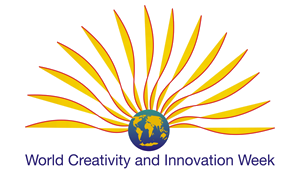“The next frontier for automation is non-routine work,” Matt Beane, researcher at MIT’s Sloan School of Management, pointed out in a recent interview in VentureBeat. “Most automation will be intangible. Once you have got good [artificial intelligence], it’s replicable at almost zero cost.”
Many jobs and skills that just a few years ago seemed rock-solid are now candidates for robotization and automation. This may mean managing tasks from a remote location via an avatar-type engagement, or having intelligent software perform an interaction. However, it doesn’t mean these jobs are going away, but being augmented by automation — requiring less manual work or intervention — or assistance from others — to accomplish. It means professionals need to identify ways in which automation can help them increase the value they are providing.
In addition to Beane’s observations, here are some leading, and sometimes surprising, examples:
- Surgeons: When a surgeon uses a Da Vinci surgical robot, “if they stray outside the surgical field, the robot can be programmed to resist,” says Beane. “They get force feedback on the manipulators. Even the best surgeon in the world can be told by the robot, multiple times during an operation ‘You shouldn’t be doing that.’”
- Journalists and technical writers: Automated article-writing programs have already been deployed for sports stories. The next frontier is generating summary reports that involve a lot of data.
- Repair crews: This is the case, especially for dangerous jobs, such as going into areas with dangerous radioactivity. For example, Beane pointed out how “aerial and ground-based robots were used in the Fukushima Daiichi nuclear disaster to help assess system and structural integrity and evaluate demolition plans.”
- Customer care representatives: Interactive voice response (IVR) systems are now highly sophisticated, and are employed to handle most routine inquiries or problems. Human call center reps are now trained to handle more elevated and unique situations. But the IVRs continue to move up the ladder, to address increasingly nuanced or sophisticated interactions.
- Train engineers:You may have already noticed that airport monorail or transport systems go from terminal to terminal without a human operator. Actually, the San Francisco area’s BART system was originally designed to be driverless when it opened back in 1972, but it was decided to keep human operators in the drivers’ seats to maintain public confidence. Along with many airport lines, driverless systems include the Copenhagen Metro, London Docklands Light Railway, and London UndergroundVictoria Line (though human operators are present to monitor door openings and emergencies.)
- Cashiers or checkers: Many retailers and supermarkets now have self check-out lines in which customers scan and process their own orders. However, in some cases, the benefits have been unclear, and there are reports of supermarkets scaling back on this trend.
- Computer operators: Yes, IT departments are finally starting to automate themselves. Many tasks that required human intervention — installing new updates and patches, scanning for security issues, and monitoring systems performance — are now being taken care of by the software itself, along with self-healing systems.
- Venture capitalists: The advent of crowdfunding sites — now permitted under recent legislation in the US — means entrepreneurs with new ideas can turn to online, automated sources for funding for new ideas, versus making pitches to live investors.
- Pilots: The rise of pilotless drones demonstrates that aircraft can fly for long periods of time for specific functions without the need for a human on board. There is a great deal of speculation that the military will soon be conducting most air combat operations without live pilots. And in the commercial aviation sector, a great deal of the commercial airline pilots’ task are automated. But it may be a long time before the flying public feels safe in a pilotless plane.
- College professors: The rise of massive open online courses (MOOCs), in which classrooms are opened to thousands of students across the globe, also requires more automated means to check and grade tests, quizzes, and even essays.
By Joe McKendrick | December 6, 2012, 9:14 AM PST
Marci Segal, MS, Creativity and Change Leadership. Freeing leaders’ thinking so they can create new futures.


There’s no question that many of the world’s routine tasks are now being subjected to automation, either through robots or software. Now, the next frontier is already opening up: the automation or robotization of non-routine tasks — affecting jobs that once seemed immune to automation.